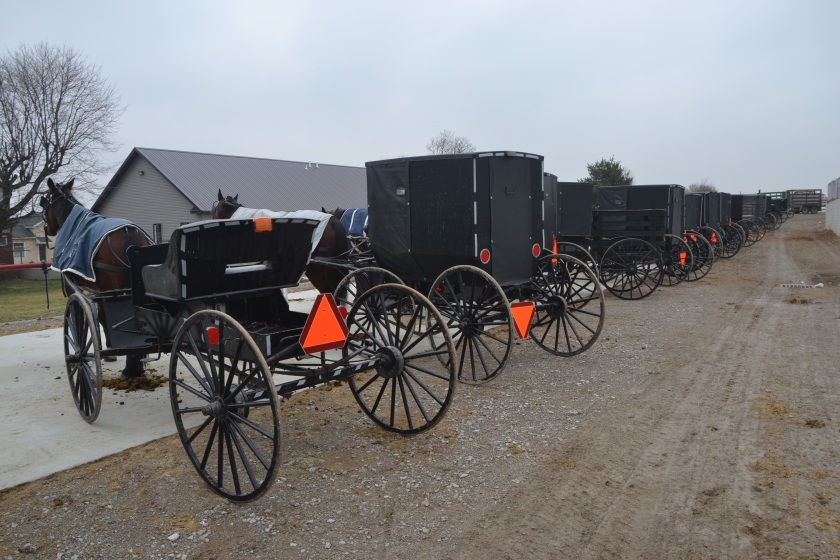
By Bruce Stambaugh
Amish buggies in Ohio’s Amish Country may be all black, but they definitely aren’t all the same. The nondescript, unobtrusive color merely keeps them uniform and modest.
Even if they all are black, a closer look reveals that there are many differences in buggies. These variances are especially true for buggies owned by younger Amish men. Particular attention is paid to the kind of accessories included on their buggies. After all, a buggy can last for 30 years if it is well maintained.
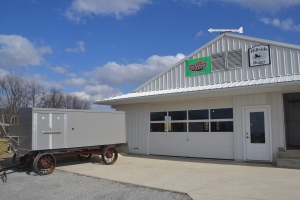
Demand for new buggies is high. Most buggy shops reported a year’s wait for a new buggy. Depending on the size of the shop and the kind of buggies being built, buggies are produced at the rate of no greater than one per week. Buggy repairs are worked in accordingly. Should a buggy be damaged in an accident or lose a wheel, for example, it would receive priority status.
Most buggy shops are family operations. A father and his son or sons may run the shop, assisted by an apprentice or even wives and daughters. This way the trade can be passed from generation to generation.
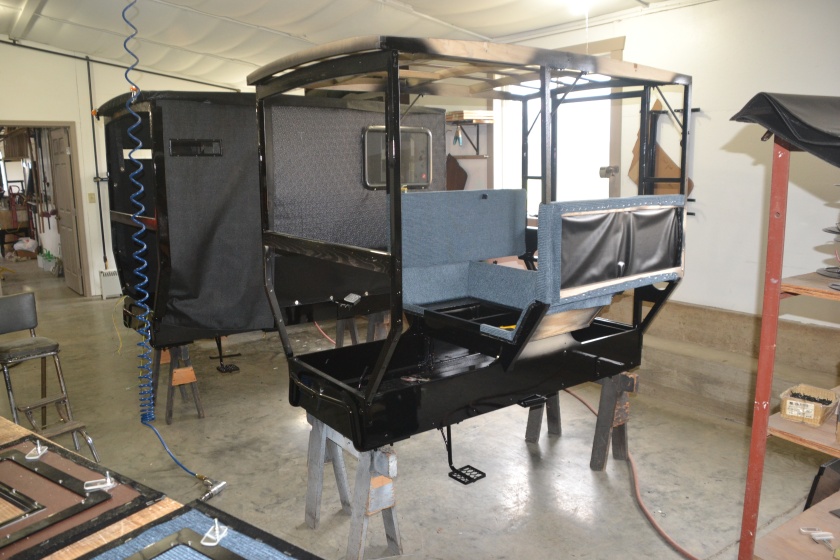
Because each buggy is custom-built one at a time, assembling a buggy is a prolonged process, taking as long as a year to complete. To build a sturdy, useful buggy, shop owners and workers need a variety of skills. They must be a carpenter, welder, upholsterer, painter and mechanic all in one.
According to Menno Schlabach, owner and operator of M & S Coach near Berlin, buggies start with a wooden base. Reinforced with metal braces, a wood framed structure is attached. The sides and tops are covered with a grained, vinyl coated black cloth.
“With 150 church districts in the area, customization of each buggy varies a great deal,” Schlabach said.
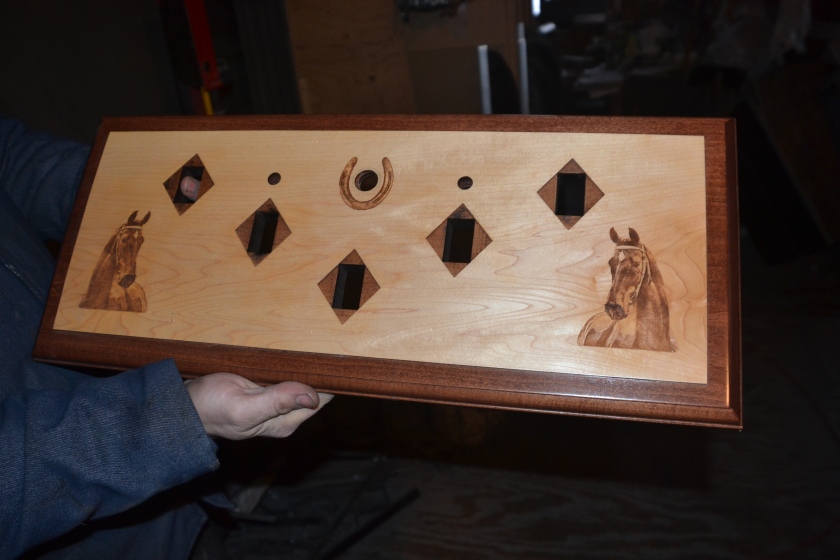
Indeed, it is the customization that allows the customer to put personal preferences into the new buggy to give it character. That process also slows the construction. With all the various options, Schlabach said it takes an average of 150 hours to build a new buggy.
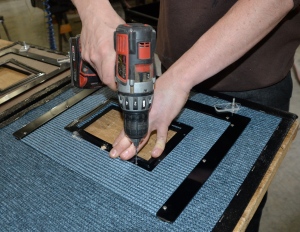
Dashboards seem to be the telling tale of the owners’ preferences. Some are intricately made using inlaid or exotic wood. The dashboards are mounted on the inside of the front piece of the buggy. They generally house switches for exterior and interior lights and turn signals.
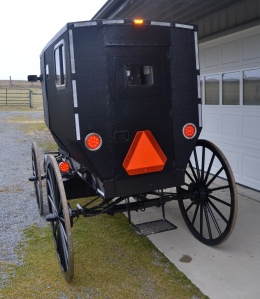
The style of buggy is determined by its purpose. A two-wheeled cart is the simplest of all buggy types and is used for quick, local trips. The hack is the Amish equivalent to a pick up truck. Sometimes called buckboards, a hack is a four-wheel buggy that is designed for hauling livestock and other bulk items. Some driver compartments of hacks are covered, while others are open.
The most common buggy type is the surrey. They are built with a bench seat and a storage area in the back that also has an option for two small flat seats along the insides. The side seats can be removed to increase storage. Usually children use those rear seats.
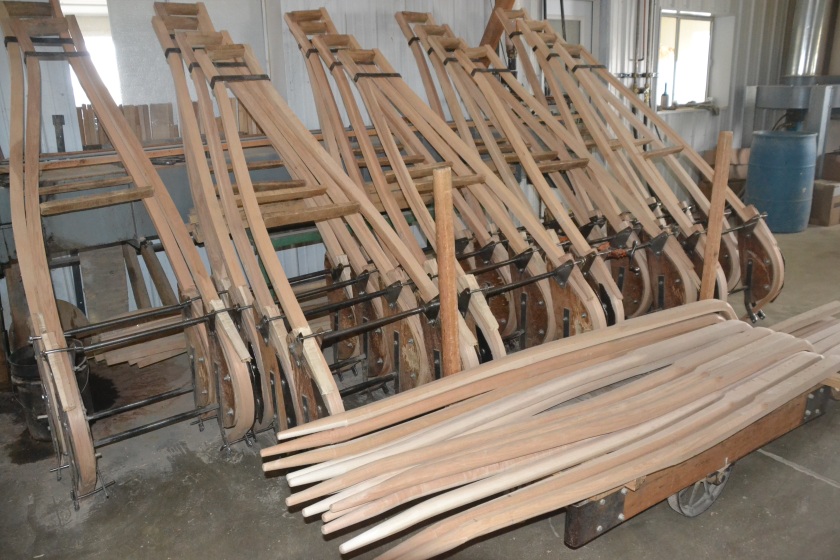
Surreys come covered or open. Covered buggies are called top buggies. The family version of a surrey has two bench seats and four openings for access, plus some storage space in the rear with a door or curtain that rolls up.

The cost of new buggies varies depending on the type and size of the buggy and the kind and amount of accessories included. A new cart could cost $1,500 while a new, well-equipped mini-surrey could run up to $7,000.
With a horse for an engine, the buggy’s driver steers with a set of reins instead of a steering wheel. Still, the purpose of a buggy is the same as a motorized vehicle. It transports its passengers from one place to the other, just at a much slower speed.
Buggies may be black. But they are an important element that helps keep the Amish culture moving in every way.
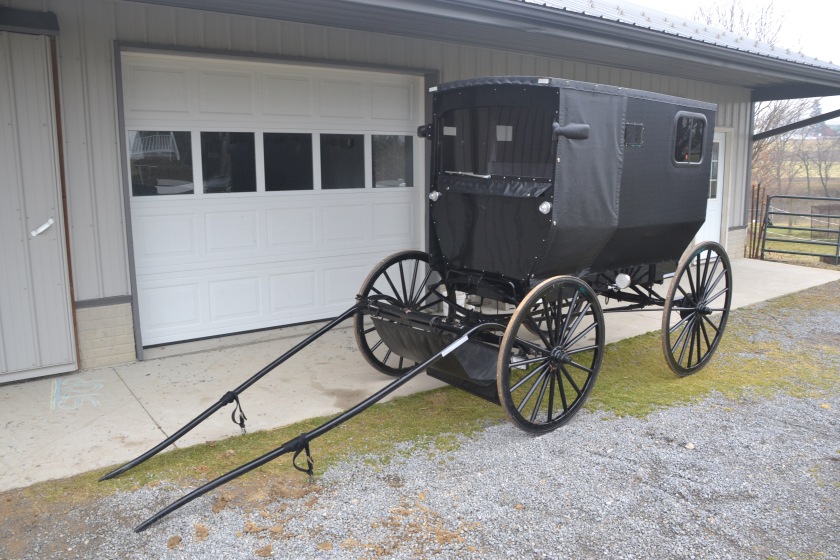
© Bruce Stambaugh 2013

I love it when I am fascinated by an article on a subject that I didn’t know was fascinating. A great read, Bruce!
LikeLike
Thanks so much, Mike. I’m glad you enjoyed the article.
Bruce
LikeLike
Have you considered writing children’s books about the Amish?
LikeLike
Mike,
Yes, I have considered that, but struggled to find a publisher that had an interest in taking on the books. The children’s market, like others, is tough right now. If you have a lead for me, that would be great.
Thanks, again.
Bruce
(P.S. I am working on a book about the Amish for adults right now, meeting with a publishing rep in a week.)
LikeLike
Good Books out of PA covers those subjects and accepts unsolicited manuscripts. Good luck!
LikeLike
Mike,
Yes, I already tried Good Books. I thought they would be perfect for a children’s series. However, they buy ALL of their childrens books from a publisher in England. When I learned that, I turned to doing the informative book for youth to adults. Thanks. Bruce
LikeLike
Well I’ll be jiggered. That’s not what they told me a few years back.
Oh, well. Take care.
LikeLike
Bruce,
The photo at the top of the buggies parked for church or a funeral is wonderful! Hope you have a great day.
Tom
backroadstraveller.blogspoy.com/
LikeLike
Tom,
Thanks so much. Indeed, it is a pic of Amish gathering for Sunday service. I’m glad you liked it.
Thanks for visiting my blog.
Bruce
LikeLike
Hi Bruce. Where is this buggy shop where they make them? Is it close to Berlin/Millersburg? I want to make a nice detailed miniature buggy in wood.
Thanks.
LikeLike
Brian, I went to several to write this piece. You could see Menno Schlabach on CR 201 just north of SR 39. His shop is on the east side of the road after BCF. I’m sure he’d be glad to help you out.
Bruce
LikeLike